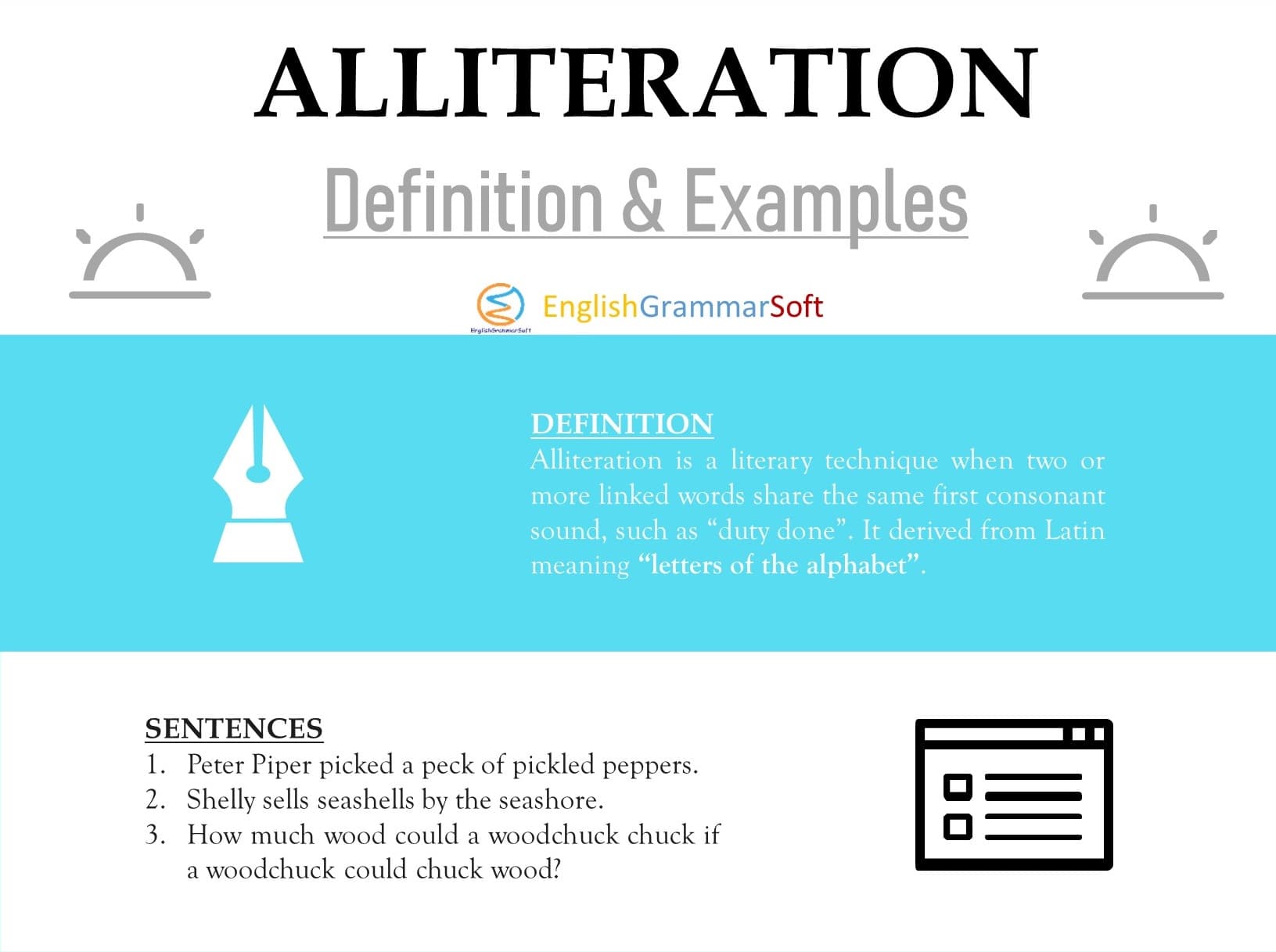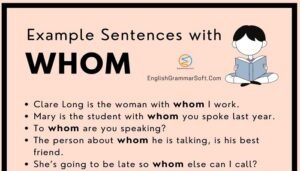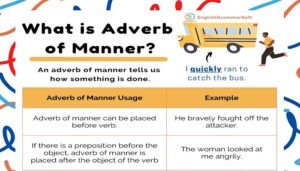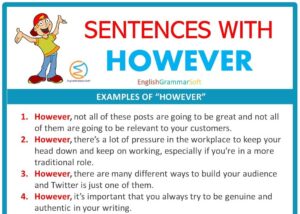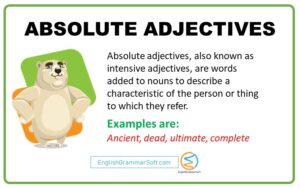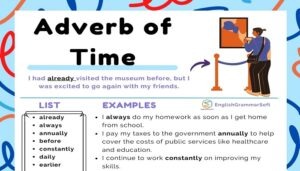Alliteration Examples in Literature | Alliteration in a Sentence
Alliteration Definition and Examples in Literature
In this article, we are going to discuss these points.
Definition
Alliteration is a literary technique when two or more linked words share the same first consonant sound, such as “duty done”. It is derived from Latin, meaning “letters of the alphabet”.
A figure of speech and a literary term in which consonants, especially at the beginning of words, or stressed syllables, are repeated.
It is a very old device indeed in English verse (older than rhyme) and is common in verse generally. It is used occasionally in prose.
In Old English poetry alliteration was a continual and essential part of the metrical scheme and until the later Middle Ages was often used thus. However, the alliterative verse becomes increasingly rare after the end of the 15th century and alliteration like assonance, consonance, and onomatopoeia – tends more to be reserved for the achievement of the special effect.
Alliteration in a sentence
- Peter Piper picked a peck of pickled peppers.
- Shelly sells seashells by the seashore.
- How much wood could a woodchuck chuck if a woodchuck could chuck wood?
The sound, not the letter, is the most important element of alliteration meaning, as not all adjacent words sharing first consonants amount to alliteration. ‘Kitty cat’ and ‘fish phobia’ are considered alliteration examples, but not “thirty typists,” because ‘th’ and ‘ty’ don’t sound the same.
Common Examples of Alliteration
- Cream of the crop
- French fry
- Hit the hay
- Pecan pie
- Super-size
- Tough talk
- Trick or treat
Alliteration Vs Assonance
Some alliteration definitions include words that begin with vowels or vowel sounds, while others hold that alliterative words can only begin with consonants.
In these definitions, adjacent words beginning with vowel sounds are sometimes considered ‘assonance’.
Alliteration Examples in Literature
Use of Alliteration in poetry
“From forth the fatal loins of these two foes…”
Shakespeare, Romeo and Julliet
“Once upon a midnight dreary while I pondered weak and weary.”
Edger Allen Poe, The Raven
“Burning bright,” and “frame thy fearful symmetry,”
William Blake, Tyger
Classic Examples
There are many classic examples, like Coleridge’s famous description of the sacred river. Alph in Kubl Khan:
“Five miles meandering with a mazy motion
Many others are less well known, like this from the beginning of Norman MacCaig’s poem Mutual Life:
A wild cat, fur-fire in a bracken bush,
Twitches his club-tail, rounds his amber eyes
At rockabye rabbits humped on the world. The air
Crackles about him. His world is a rabbit’s size.
And, from the first stanza of R.S. Thomas’s The Welsh Hill-Country:
Too far for you to see
The fluke and the foot-rot and the fat maggot
Gnawing the skin from the small bones,
The sheep are grazing at Bwlch-y-Fedwen,
Arranged romantically in the usual manner
On a bleak background of bald stone.
Alliteration is common in nonsense verse:
Be lenient with lobsters, and ever kind to crabs,
And be not disrespectful to cuttle-fish or dabs;
Chase not the Chochin-China, chaff not the ox obese,
And babble not of feather-beds in company with geese.
in tongue-twisters:
Betty Botter bought some butter,
But, she said, the butter’s bitter;
If I put it in my batter
It will make my batter bitter,
But a bit of better butter,
That would make my batter better.
In jingles:
Dingle dingle doosey,
The cat’s in the well,
The dog’s away to Bellingen
To buy the bairn a bell
Alliterative Prose
A good deal of Old English and Middle English prose alliterates and uses some of the techniques verse. In Old English Aelfric and Wulfstan wrote outstanding alliterative prose. Notable instances Middle English belong to what is called “The Katherine Group’: five works of devotional prose.
Alliterative Revival
A general term for a collection of poems composed in the second half of the 14th century. Alliteration had been the basic device in Old English poetry and was then again used, especially by Langland in Piers Plowman and by the author of Sir Gawain and the Green Knight.
Alliterative Verse
The alliterative meter is an essential feature of Germanic prosody. Alliteration was a basic part of the structure. Nearly all Old English verse is heavily alliterative, and the pattern is fairly standard-with either two or three stressed syllables in each line alliterating.
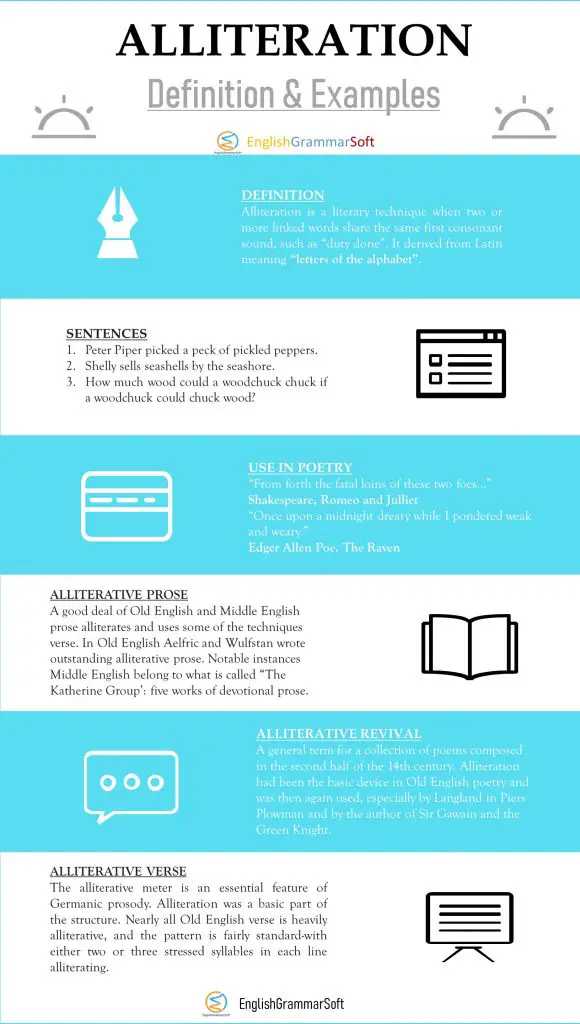
Further Reading
- Types of Alliteration
- Absurd in Literature
- What is Acatalectic in Literature?
- Aestheticism in Literature
- 27 Figures of Speech with Examples
- What is a simile? How to write a good simile?
- Metaphor Types and Examples
- Apostrophe as a Figure of Speech
- Hyperbole Definition and Examples
- Personification in Poems and Literature
